Ford Focus vs SsangYong Korando - Differences and prices compared
Costs and Efficiency:
Looking at overall running costs, both models reveal some interesting differences in everyday economy.
SsangYong Korando has a barely noticeable advantage in terms of price – it starts at 27000 £, while the Ford Focus costs 27500 £. That’s a price difference of around 523 £.
Fuel consumption also shows a difference: Ford Focus manages with 4.90 L and is therefore decisively more efficient than the SsangYong Korando with 7.50 L. The difference is about 2.60 L per 100 km.
Engine and Performance:
Under the bonnet, it becomes clear which model is tuned for sportiness and which one takes the lead when you hit the accelerator.
When it comes to engine power, the Ford Focus has a distinct edge – offering 280 HP compared to 190 HP. That’s roughly 90 HP more horsepower.
In acceleration from 0 to 100 km/h, the Ford Focus is clearly quicker – completing the sprint in 5.70 s, while the SsangYong Korando takes 8.40 s. That’s about 2.70 s faster.
In terms of top speed, the Ford Focus performs noticeable better – reaching 250 km/h, while the SsangYong Korando tops out at 191 km/h. The difference is around 59 km/h.
There’s also a difference in torque: Ford Focus pulls a bit stronger with 420 Nm compared to 360 Nm. That’s about 60 Nm difference.
Space and Everyday Use:
Beyond pure performance, interior space and usability matter most in daily life. This is where you see which car is more practical and versatile.
Seats: offers more seating capacity – vs .
In curb weight, Ford Focus is a bit lighter – 1330 kg compared to 1517 kg. The difference is around 187 kg.
In terms of boot space, the SsangYong Korando offers distinct more room – 551 L compared to 392 L. That’s a difference of about 159 L.
In maximum load capacity, the Ford Focus performs barely noticeable better – up to 1354 L, which is about 106 L more than the SsangYong Korando.
When it comes to payload, Ford Focus to a small extent takes the win – 560 kg compared to 463 kg. That’s a difference of about 97 kg.
Who comes out on top?
Overall, the Ford Focus shows itself to be leaves the rival little chance and secures the title of DriveDuel Champion.
It convinces with the more balanced overall package and proves to be the more versatile choice for everyday use.
 @ Ford Motor Company / Ford Media Center
@ Ford Motor Company / Ford Media Center
Ford Focus
Costs and Consumption
View detailed analysis
Engine and Performance
View detailed analysis
Dimensions and Body
View detailed analysis
Ford Focus
The Ford Focus remains a clever all‑rounder that balances sharp handling with everyday comfort, making it a strong choice whether your commute is city streets or country lanes. Its practical cabin and sensible running costs mean you’ll spend more time enjoying the drive and less time worrying about ownership, with a playful streak underfoot that keeps things interesting.
details @ Ford Motor Company / Ford Media Center
@ Ford Motor Company / Ford Media Center
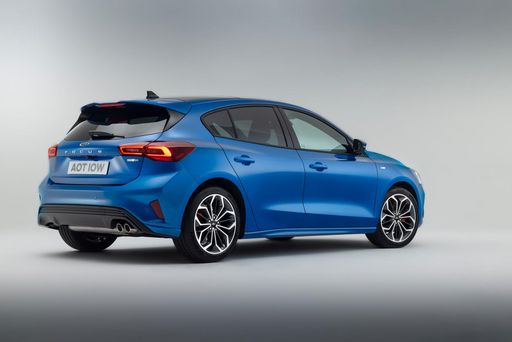 @ Ford Motor Company / Ford Media Center
@ Ford Motor Company / Ford Media Center
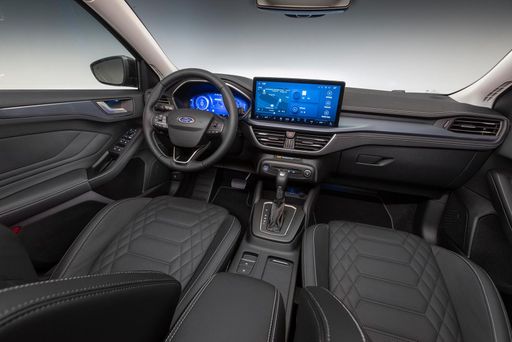 @ Ford Motor Company / Ford Media Center
@ Ford Motor Company / Ford Media Center
SsangYong Korando
The SsangYong Korando pairs bold, modern styling with a surprisingly roomy and practical cabin, so it looks confident at the lights and handles the daily grind without fuss. It swaps flashy badges for honest value, offering a composed ride, useful equipment and wallet-friendly running that make it an appealing pick for buyers who'd rather spend on weekends than on extravagant finance packages.
details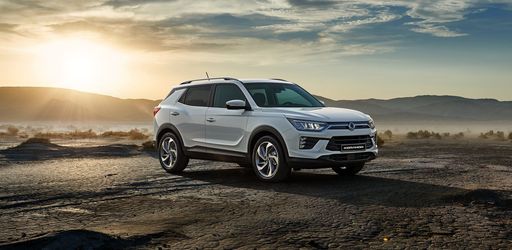 @ SsangYong Motor / KG Mobility
@ SsangYong Motor / KG Mobility
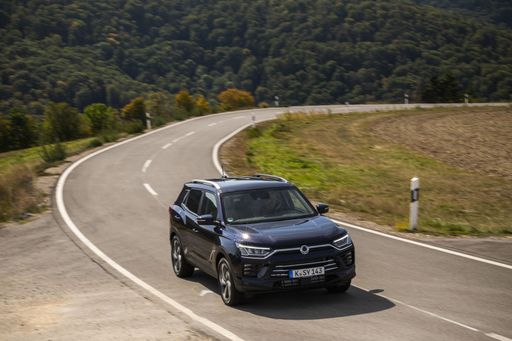 @ SsangYong Motor / KG Mobility
@ SsangYong Motor / KG Mobility
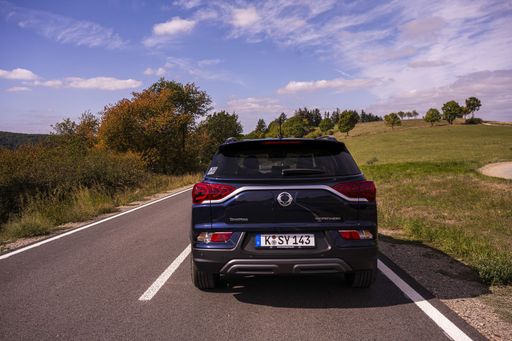 @ SsangYong Motor / KG Mobility
@ SsangYong Motor / KG Mobility
 @ SsangYong Motor / KG Mobility
@ SsangYong Motor / KG Mobility
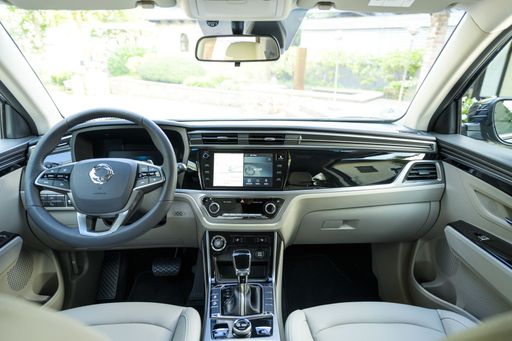 @ SsangYong Motor / KG Mobility
@ SsangYong Motor / KG Mobility
 @ Ford Motor Company / Ford Media Center
@ Ford Motor Company / Ford Media Center
|
 @ SsangYong Motor / KG Mobility
@ SsangYong Motor / KG Mobility
|
|
|
|
Costs and Consumption |
|
|---|---|
|
Price
27500 - 42700 £
|
Price
27000 - 42000 £
|
|
Consumption L/100km
4.9 - 8 L
|
Consumption L/100km
7.5 - 8.6 L
|
|
Consumption kWh/100km
-
|
Consumption kWh/100km
16.80 kWh
|
|
Electric Range
-
|
Electric Range
339 km
|
|
Battery Capacity
-
|
Battery Capacity
-
|
|
co2
117 - 183 g/km
|
co2
0 - 197 g/km
|
|
Fuel tank capacity
52 L
|
Fuel tank capacity
50 L
|
Dimensions and Body |
|
|---|---|
|
Body Type
Hatchback
|
Body Type
SUV
|
|
Seats
5
|
Seats
5
|
|
Doors
5
|
Doors
5
|
|
Curb weight
1330 - 1529 kg
|
Curb weight
1517 - 1840 kg
|
|
Trunk capacity
392 L
|
Trunk capacity
551 L
|
|
Length
4382 - 4397 mm
|
Length
4450 - 4465 mm
|
|
Width
1825 - 1844 mm
|
Width
1870 mm
|
|
Height
1438 - 1482 mm
|
Height
1620 - 1645 mm
|
|
Max trunk capacity
1354 L
|
Max trunk capacity
1248 L
|
|
Payload
495 - 560 kg
|
Payload
410 - 463 kg
|
Engine and Performance |
|
|---|---|
|
Engine Type
Petrol MHEV, Diesel, Petrol
|
Engine Type
Petrol, Electric
|
|
Transmission
Manuel, Automatic
|
Transmission
Manuel, Automatic
|
|
Transmission Detail
Manual Gearbox, Dual-Clutch Automatic, Automatic Gearbox
|
Transmission Detail
Manual Gearbox, Automatic Gearbox, Reduction Gearbox
|
|
Drive Type
Front-Wheel Drive
|
Drive Type
Front-Wheel Drive, All-Wheel Drive
|
|
Power HP
115 - 280 HP
|
Power HP
163 - 190 HP
|
|
Acceleration 0-100km/h
5.7 - 11.8 s
|
Acceleration 0-100km/h
8.40 s
|
|
Max Speed
186 - 250 km/h
|
Max Speed
156 - 191 km/h
|
|
Torque
170 - 420 Nm
|
Torque
260 - 360 Nm
|
|
Number of Cylinders
3 - 4
|
Number of Cylinders
4
|
|
Power kW
85 - 206 kW
|
Power kW
120 - 140 kW
|
|
Engine capacity
999 - 2261 cm3
|
Engine capacity
1497 cm3
|
General |
|
|---|---|
|
Model Year
2022 - 2024
|
Model Year
2021 - 2023
|
|
CO2 Efficiency Class
D, G
|
CO2 Efficiency Class
F, G, A
|
|
Brand
Ford
|
Brand
SsangYong
|
What drive types are available for the Ford Focus?
Available configurations include Front-Wheel Drive.
The prices and data displayed are estimates based on German list prices and may vary by country. This information is not legally binding.
